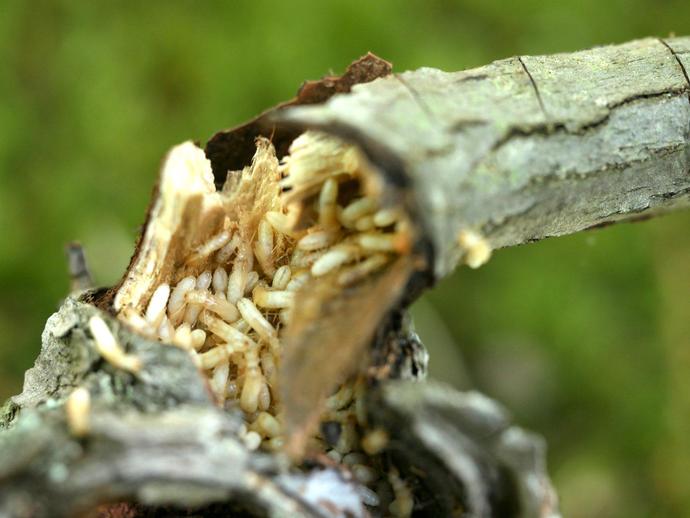November 4, 2020
Ben here with today's #BenInNature update! The eastern subterranean termite (Reticulitermes flavipes) is our most common North American termite. If you're a homeowner, the word "termite" probably fills you with dread, but as much as they can be pests, we would be in pretty dire straits if we didn't have termites around. Each year, termite control in the U.S. costs about $2.2 billion; however, termites play a critical role in digesting cellulose from dead organic matter in our forests, and if we didn't have them around to recycle nutrients, our forests would be in pretty rough shape. If you put it on a scale, termites definitely offer a net positive to the world, although I understand if that comes as cold comfort if you currently need to pay a contractor to replace your floor joists.
Much like ants, termites are social insects that have a caste system. Worker termites are sterile and are the ones that eat the majority of the wood; they also help repair the nest and care for the eggs and baby termites. Soldier termites make up about two percent of the colony and use their crushing mandibles to defend the nest against attacks from predators. Finally, there's the reproductive caste; these are the termites that either lay eggs to maintain the colony or sprout wings and disperse from the colony to establish new colonies.
Much like the wood roaches we looked at not long ago, termites cannot digest cellulose themselves; their guts contain tiny organisms called flagellates that break the cellulose down into simple sugars.
So how do termites establish new colonies? Check back tomorrow to learn more!
ABOUT #BenInNature
Social distancing can be difficult, but it presents a great opportunity to become reacquainted with nature. In this series of posts, Administrator of Science Ben Williams ventures outdoors to record a snapshot of the unique sights that can be found in the natural world. New updates are posted Monday - Friday, with previous posts highlighted on the weekends.
NATURE PHOTO IDENTIFICATIONS
If you discover something in nature that you would like help identifying, be sure to message us right here on Facebook with a picture (please include location and date of picture) and we'll have our experts help you identify it!

 Hours & Admissions
Hours & Admissions Directions
Directions

